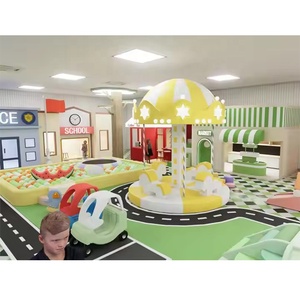(5012 منتجًا متوفرة)








































































































































































































استكشف المجموعة على Alibaba.com وأضف حرفًا أو حرفين إلى عائلة مدينة الألعاب الحالية. تدرك المنصة أهميتها ليس فقط للأطفال ولكن للبالغين أيضًا. استبدل الشخصية المفقودة بنفس الشخصية الجديدة ، أو اذهب خارج الصندوق وابني شيئًا جديدًا تمامًا. مدينة الألعاب اصنع هدايا أعياد ميلاد خاصة لأحبائك كما أنها هدايا تذكارية رائعة أيضًا. نظرة واحدة عليهم وتأتي مشاعر الحنين والذكريات مستعجلة! يمكن أيضًا أن تكون ممتعة عند النظر إليها ومصدرًا مهمًا للسعادة.
تمتلك Alibaba.com مجموعة ضخمة من مدينة الألعاب لاستكشافها. لديها مجموعة كبيرة من الشخصيات المذهلة من التلفزيون والأفلام والألعاب. كل تحصيل له ميزات فريدة ، وكل منها هو نوع مختلف من المرح. سوف يفاجأ المتحمسون لاكتشاف أندر الشخصيات ، التي يُعتقد أنها انقرضت ، هنا. بخلاف الأحرف الفردية الجاهزة ، تتوفر أيضًا قطع من الطوب وقطع الشخصيات. تتحدى هذه الإبداع الداخلي عند تجميعها معًا لتكوين صداقات أو أسرة أو أشخاص مشهورين.
مدينة الألعاب لا تقدم الهدايا اللطيفة فحسب ، بل إنها أيضًا مفيدة في التصميم الداخلي المساحات. يصنعون عروض فريدة عند دمجها في المساحات. إنها تمثل شخصية الفرد وهي أيضًا أجزاء أساسية في العقيدة الدينية للأفراد. يمكن لأي شخص معرفة ما إذا كان المالك يحب الأفلام والأبطال الخارقين والأماكن المفضلة وما إلى ذلك ، فقط من خلال اكتشاف هذه القطع المركزية الصغيرة اللطيفة. من الممكن تصميم أحرف خاصة حسب الطلب.
استرخ الآن ، ينتهي البحث هنا. استمتع بتجربة تسوق لا مثيل لها مع Alibaba.com للحصول على صفقات بيع بالجملة وتجزئة مدينة الألعاب تنافسية وبأسعار تنافسية. اختر مفضلة واطلب الآن.